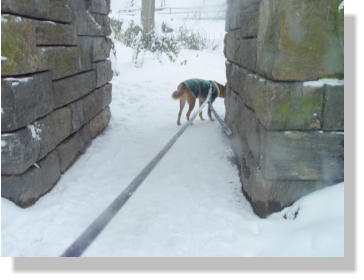

Design by KumaKoo Productions - Manhattan, New York USA


Writing it Without Having Been There
I’m
not
certain
how
it
happened,
but
it
did.
I
was
in
the
throws
of
writing
The
Killing
Game
and
one
day
I
looked
at
a
photograph
of
a
man
and
directly
into
his
eyes,
a
man
from
the
former
Yugoslavia.
In
my
head,
I
heard
a
man’s
voice,
“Write
a
story
about
my
country.”
I
heard
that
voice
in
my
head
so
clearly
as
if
whoever
he
was
right
there
with
me.
Whose
voice
was
it
I
heard?
God’s?
My
favorite,
Archangel
Michael’s? Or someone else’s?
It
was
difficult
to
know,
but
it
was
an
idea
I
could
not
let
go
of.
I
tried
not
to
think
about
it,
but
again,
within
about
fifteen
minutes
to
half
an
hour,
I
was
busily
typing
the
opening
sequence
on
my
computer.
At
that
point,
I
had
written
the
story
from
beginning
to
end
inside
my
head
and
it
was
now
clamoring
to
get
out.
This
was
dur
-
ing
the
Christmas
holiday
of
1994
when
the
siege
for
Sarajevo
was
hot
and
heavy.
I
had read and listened to the news about the war, but I did not quite understand it.
The
press
painted
the
reason
behind
the
war
as
“ethnic
cleansing
due
to
religious
differences”
but
that
sounded
so
bogus.
So
I
started
to
dig.
I
started
asking
ques
-
tions
and
found
that
most
of
the
facts
were
cloaked
in
the
propaganda
of
the
war’s
side
effects.
I
started
searching
for
people
from
the
former
Yugoslavia
and
I
found
them.
I
asked
questions
and
received
many
different
points
of
view—it
was
a
bit
mind boggling.
From
all
the
information
I
gleaned,
there
was
more
confusion
than
sense
to
be
made
of
it
all.
That,
in
essence,
was
the
crux
of
the
war
and
would
be
the
backdrop
of
my
story.
Misconceptions,
lies,
deceptions,
loss
and,
lost
causes
gave
me
only
a
few
choices
for
conjuring
a
story
about
a
place
I
had
neither
traveled
to
nor
seen
the
war
up
close.
Actually,
I’ve
never
seen
war
up
close.
I
have
seen
a
lot
of
things
in
life but not war. So how do I write about it?
First,
I
had
to
decide
what
the
story
would
be
about.
That
took
a
whole
of
two
sec
-
onds.
I
write
about
interpersonal
relationships
(let’s
call
it
IR
for
this
segment).
And
what
sort
of
IR
would
this
story
be
about?
Naturally
a
man
and
woman,
but
not
the
typical
man/woman
relationship.
War
would
cause
issues,
would
it
not?
Are
they
both
from
Yugoslavia
or
from
somewhere
else?
If
they
were
from
the
same
country,
they
might
be
clawing
to
get
out
of
there.
If
from
different
countries,
how
would
they get in? Or better, why?
At
the
time,
there
were
several
movies
in
the
works
about
this
situation
but
my
story
had
to
be
different.
Nothing
yet
told
the
everyday
stories
of
those
who
fought
to
stay
alive
in
this
war.
I
wanted
my
story
to
be
about
that.
No
one
spoke
about
the
everyday
heroes
that
stove
to
help
others
who
could
not
help
themselves.
The
news
made
it
sound
as
if
the
civilian
populace
were
rabid
dogs,
fighting
with
any
-
one
and
everyone
to
get
what
they
could.
And
that
was
only
when
they
cared
to
report
on
civilians
other
than
the
major
atrocities.
But
the
press
has
always
been
about
sensationalism
because
that
sells
newspapers.
I
wanted
something
different.
Something
that
would
speak
to
the heart and soul of the people.
The
answer
was
obvious.
A
man
from
Yugoslavia
and
a
woman
from
America.
But
what
would
bring
her
out
of
her
comfortable
existence
in
the
US
to
a
war-torn
country?
It
did
not
take
long
to
formulate
the
answer,
which
was
a
concern
since
I
first
heard
about
the
war—the
children
who
had
lost
their
parents?
Yes,
an
orphan
would
be
something
motivating
to
bring
the
heroine
from
her
safe
environment.
It
would
be
enough
to
make
me
want
to
find
her.
So
the
story
would
be
about
a
man
from Yugoslavia, a woman from America, and an orphan.
I
had
written
a
sketch
before
I
found
sites
documenting
the
atrocities
of
this
war.
My
sketches
consist
of
cohesive
thoughts
laid
out
in
the
order
they
will
occur,
usu
-
ally
needing
the
details
filled
in
later.
So
I
wrote
this
sketch
before
I
read
about
the
prison
camps
held
by
all
three
warring
sides:
Muslims,
Croatians,
and
Serbians.
Mind
you,
when
I
use
these
ethnic
titles,
I
am
speaking
about
the
military
sides
of
the
war,
not
the
civilian
population.
However,
nationalist
ideologies
do
bleed
out
into
the
civilian
population.
But
my
story
is
about
one
man,
with
only
the
ideology
of
what
is
right
by
God’s
laws.
It
was
my
goal
to
tell
the
story
of
a
man
who,
though
not
of
Serbian
descent,
was
raised
by
a
Serbian
family.
In
this
situation,
a
lesser
man
might
have
been
swayed
by
his
nationalist
ancestry
and
turned
on
the
very
people that gave him a beautiful life. In the heroes own words:
For
now,
I
am
not
going
to
go
into
details
about
what
caused
the
war.
Read
the
book
and
you
will
get
enough
information
to
understand
its
cause
without
belabor
-
ing
the
war
itself.
Read
the
book
and
you
will
be
pulled
into
an
adventure,
less
about
war
and
more
about
love
and
honor.
Through
those
emotions,
your
heart
will
feel
the
story.
It
will
feel
the
plight
of
those
souls
stuck
in
the
middle
of
warring
factions,
fighting
for
all
they
felt
was
right.
And
when
it
comes
to
the
end
you
will
either
relate
to
the
characters
and
say
to
yourself,
that’s
exactly
what
I
would
have
done. Or you will slam the book shut and say getting involved was stupid.
Regardless,
you
will
have
felt
something
and
that,
in
the
end,
is
what
writing
is
about.
Love,
hate,
sorrow,
joy—whatever
the
emotion,
the
point
is
that
you
felt
it
while
you
were
in
the
Here
we
go,
this
was
a
challenge.
I
started
laying
out
book
covers
back
in
1995.
I
tried
images
that
looked
like
postcards,
searched
the
Internet
for
images
to
purchase,
created
a
plain
cover…nothing
quite
fit
the
story.
In
2012,
when
I
gave
myself
a
deadline
to
publish
the
story,
I
again
started
searching
for
the
perfect
cover
photo.
It
had
to
be
a
photograph
that
captured
the
mood
of
the
novel.
Unlike
my
other
series,
The
Killing
Game
Series,
which
is
more
of
a
dark
drama, this story always gave me a sense of the color gray or blue.
Again,
I
searched
online.
The
years
made
a
difference
on
what
could
be
purchased
from
stock
photo
companies.
I
searched,
but
nothing
was
right.
Being
a
photogra
-
pher,
I
almost
always
have
some
form
of
a
camera
in
my
possession.
In
the
morning
when
I’m
out
in
the
yard
with
my
pup,
I’m
usually
photographing
her.
(Last
count
was
about
8
years
ago
and
I
had
a
little
over
17,000
photographs
of
her.
I
can
only imagine how many I’ve taken since.)
The
view
from
the
yard
is
spectacular,
especially
in
winter.
I
had
spent
a
good
deal
of
time
photographing
the
woods
and
I
was
intrigued
by
the
trees
across
the
lake
approximately
half
a
mile
away.
I
spent
several
days
the
winter
of
2013
capturing
images.
I
transferred
the
photographs
to
my
computer,
not
actually
examining
them because I could take 100 or so in any one session.
In Search of the Perfect Cover Photo
Spring
came
and
I
thought
perhaps
a
cemetery
would
give
me
the
atmosphere
I
sought.
I
wrote
to
two
of
the
larger
historic
cemeteries
just
outside
of
Manhattan,
gained
permission
to
photograph
there
and
found
several
worthy
statues.
Even
with the fabulous shots I took, the cover wasn’t coming from that session.
Typically
the
way
I
photograph
is
shooting
a
series
of
the
very
same
subject,
chang
-
ing
lighting,
angle,
etc.
Most
of
the
time
I
will
do
what
I
call
a
sweep,
using
the
motor
drive
at
high
speed
to
reduce
blur
when
not
using
a
tripod.
That
sometimes
provides
hundreds
of
photographs
to
examine
and
look
through.
That
is
time
con
-
suming,
but
a
valuable
practice
because
each
millisecond
the
light
changes
and
the
captured essence in one shot may not have been in the shot before or just after.
I
went
back
and
began
reviewing
all
the
winter
shots
I
had
and
there
were
three
pho
-
tographs,
taken
in
succession,
of
three
different
locations
of
the
trees
across
the
lake
all
on
February
11,
2013.
The
first
was
taken
at
1:00
pm,
the
second
at
1:02
pm, and the third at 1:03 pm. story.
Nothing
was
taken
in
between.
The
time
lapse
was
me
moving
from
one
location
to
the
next.
Three
individual
scenes,
all
beauti
-
ful
and
secretive.
My
goal
was
to
see
the
trees
across
the
lake
while
simultaneously
creating
a
mystery
as
if
someone
is
looking
through
binoculars
or
perhaps
a
rifle
scope.
Someone
who
is
hiding,
someone
who
doesn’t
want
to
be
seen.
The
winner
was
obvious.
After
manipulating
the
color
to
bring
out
the
blue
emotion,
the
end
result
was:
Quite
often
I
get
scolded
for
obscuring
my
n
a
m
e
.
But
the
story
is
about
the
characters,
even
if
my
heart
and
soul
are
behind
each
and
every
word.
Writing
is
an
art.
Once
you
have
committed
your
story
to
paper,
finding
the
perfect
image
to
reflect
what
your
heart
has
transcribed
is
sometimes
the
hardest
part
of
the
entire
writ
-
ing
process.
It
is
said,
“You
can’t
judge
a
book
by
its cover.” They’re right.
Just
as
you
can’t
judge
a
book
by
its
title
(another
thing
I
hear
about
from
people).
Yet
it
is
true.
“A
picture
is
worth
a
thousand
words.”
And
even
if
everyone
doesn’t
see
the
wintery
mystery
of
someone
spying
through
the
trees
in
this cover, my heart is content in knowing no other image could take its place.
In the end, the perfect cover photograph was right in my backyard…
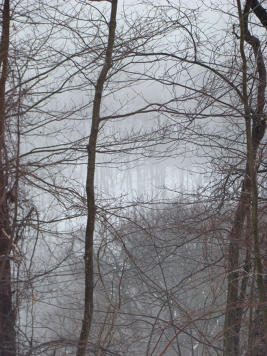
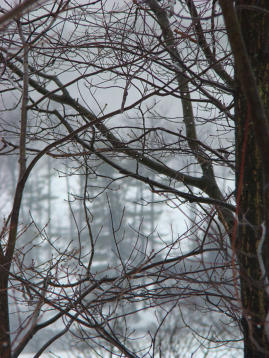
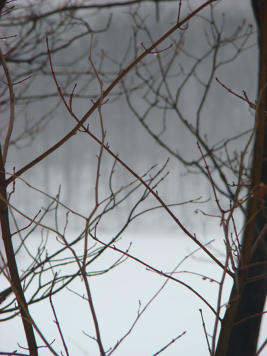
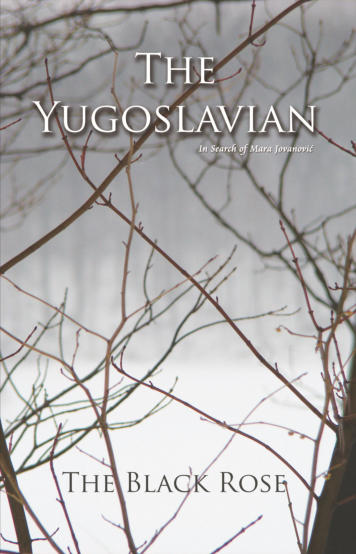
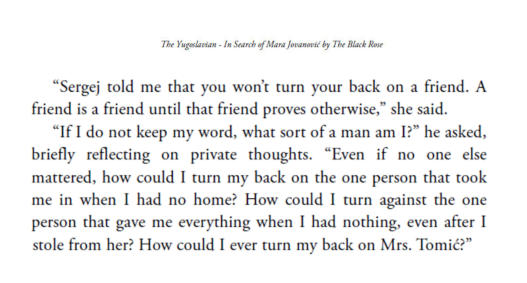
All was well until…
Designed and then Redesigned
Okay,
so
yes,
I
thought
I
had
the
most
fitting
image
until
I
was
browsing
through
the
photographs
I
originally
wanted
to
use
for
this
cover.
And
there
it
was,
a
snowy
scene
from
an
old
arch
in
The
Ramble
in
Central
Park,
New
York.
Everytime
I
walk
past
it,
I
photograph
it.
Literally,
I
have
many
photographs
of
this
old
stone
structure.
This
particular
shot
was
not
very
clear,
it
was
shot
during
a
snow
storm
while
out
on
an
adventure
with
pup
Kuma.
There
she
is
scouting
the
way
for mommy.
It’s
a
beautiful
location
and
considering
the
storyline
being
set
in
the
historic
city
of
Sarajevo,
somehow
the
simple
stones
set
against
the
snowy
back
-
ground
fitted.
However,
the
shot
needed
a
lot
of
minupulation
to
bring
out
the
frosty
coldness
I
wanted.
the
date
was
April
16,2005
at
8:08
p.m.,
and this is where it started.
First,
the
shot
needed
to
be
brightened
but
to
maintain
as
much
detail
as
pos
-
sible.
Then
it
was
fitted
to
the
book
cover
size
of
5.5x8.5.
That
left
a
good
deal
of
space
on
the
left
end
so
I
cropped
and
rebuilt
the
photograph.
The
shot
was
enhanced
with
several
layers
of
a light, white, gradiant overlay to enhance the snowy look until I got this.
I
love
photographs
that
wrap
around
a
book.
I
feel
it’s
more
intriguing
and
inviting
to
readers
and
makes
the
book
more
of
a
piece
of
art
than
just
literature.
After
fid
-
dling with different font styles and sizes, this is what I ended up with:
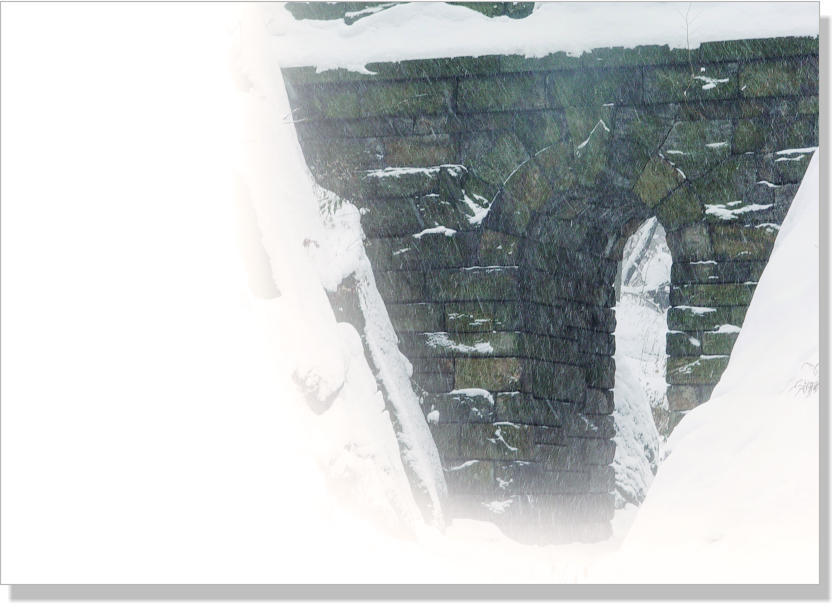
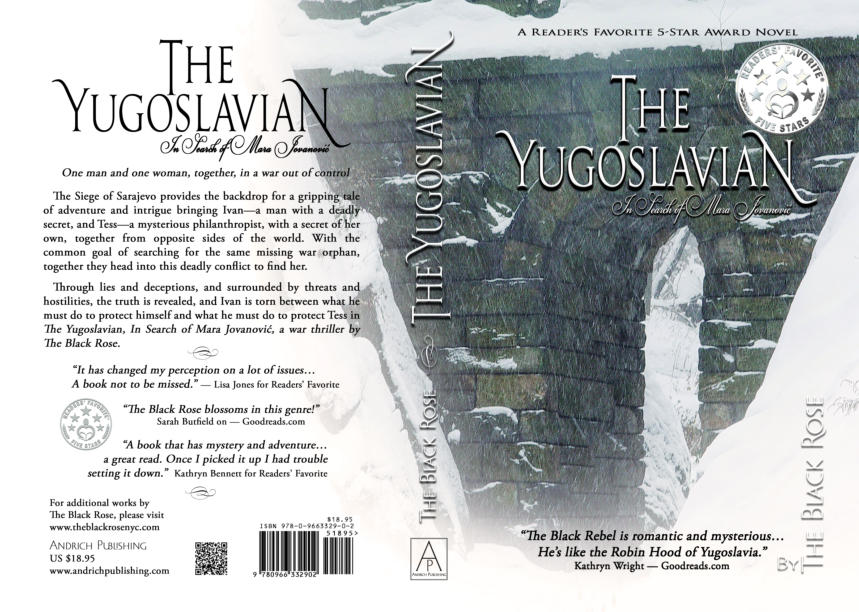
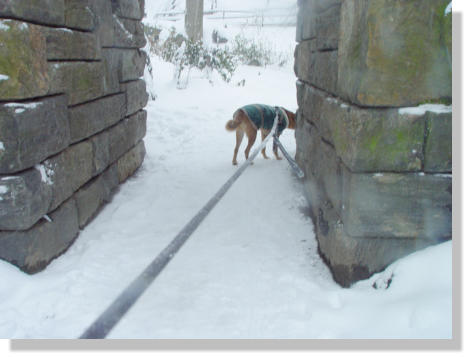
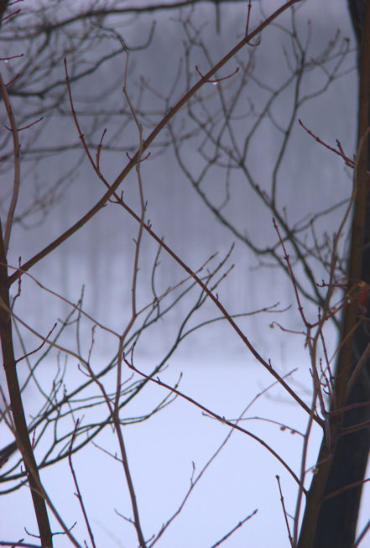
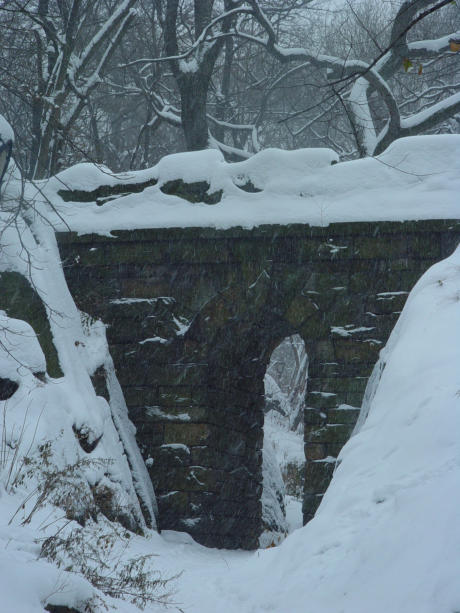
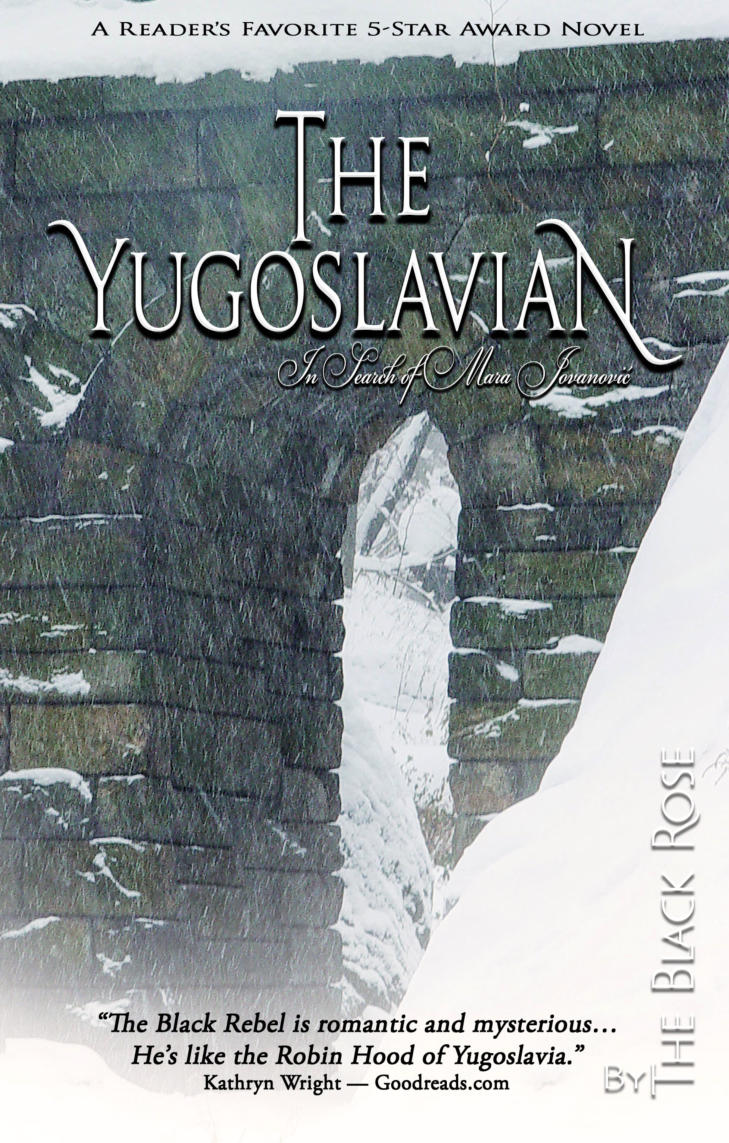
© 2017 ∞ Copyright by The Black Rose & Andrich Publishing. All rights reserved.

Design by KumaKoo Productions - Manhattan, New York USA
Writing it Without Having Been There
I’m
not
certain
how
it
happened,
but
it
did.
I
was
in
the
throws
of
writing
The
Killing
Game
and
one
day
I
looked
at
a
photo
-
graph
of
a
man
and
directly
into
his
eyes,
a
man
from
the
former
Yugoslavia.
In
my
head,
I
heard
a
man’s
voice,
“Write
a
story
about
my
country.”
I
heard
that
voice
in
my
head
so
clearly
as
if
whoever
he
was
right
there
with
me.
Whose
voice
was
it
I
heard?
God’s?
My
favorite,
Archangel
Michael’s? Or someone else’s?
It
was
difficult
to
know,
but
it
was
an
idea
I
could
not
let
go
of.
I
tried
not
to
think
about
it,
but
again,
within
about
fifteen
minutes
to
half
an
hour,
I
was
busily
typ
-
ing
the
opening
sequence
on
my
com
-
puter.
At
that
point,
I
had
written
the
story
from
beginning
to
end
inside
my
head
and
it
was
now
clamoring
to
get
out.
This
was
during
the
Christmas
holiday
of
1994
when
the
siege
for
Sarajevo
was
hot
and
heavy.
I
had
read
and
listened
to
the
news
about
the
war,
but
I
did
not
quite
under
-
stand it.
The
press
painted
the
reason
behind
the
war
as
“ethnic
cleansing
due
to
religious
differences”
but
that
sounded
so
bogus.
So
I
started
to
dig.
I
started
asking
ques
-
tions
and
found
that
most
of
the
facts
were
cloaked
in
the
propaganda
of
the
war’s
side
effects.
I
started
searching
for
people
from
the
former
Yugoslavia
and
I
found
them.
I
asked
questions
and
received
many
different
points
of
view—it
was a bit mind boggling.
From
all
the
information
I
gleaned,
there
was
more
confusion
than
sense
to
be
made
of
it
all.
That,
in
essence,
was
the
crux
of
the
war
and
would
be
the
back
-
drop
of
my
story.
Misconceptions,
lies,
deceptions,
loss
and,
lost
causes
gave
me
only
a
few
choices
for
conjuring
a
story
about
a
place
I
had
neither
traveled
to
nor
seen
the
war
up
close.
Actually,
I’ve
never
seen
war
up
close.
I
have
seen
a
lot
of
things
in
life
but
not
war.
So
how
do
I
write about it?
First,
I
had
to
decide
what
the
story
would
be
about.
That
took
a
whole
of
two
sec
-
onds.
I
write
about
interpersonal
relation
-
ships
(let’s
call
it
IR
for
this
segment).
And
what
sort
of
IR
would
this
story
be
about?
Naturally
a
man
and
woman,
but
not
the
typical
man/woman
relationship.
War
would
cause
issues,
would
it
not?
Are
they
both
from
Yugoslavia
or
from
somewhere
else?
If
they
were
from
the
same
country,
they
might
be
clawing
to
get
out
of
there.
If
from
different
countries,
how
would
they get in? Or better, why?
At
the
time,
there
were
several
movies
in
the
works
about
this
situation
but
my
story
had
to
be
different.
Nothing
yet
told
the
everyday
stories
of
those
who
fought
to
stay
alive
in
this
war.
I
wanted
my
story
to
be
about
that.
No
one
spoke
about
the
everyday
heroes
that
stove
to
help
others
who
could
not
help
themselves.
The
news
made
it
sound
as
if
the
civilian
populace
were
rabid
dogs,
fighting
with
anyone
and
everyone
to
get
what
they
could.
And
that
was
only
when
they
cared
to
report
on
civilians
other
than
the
major
atrocities.
But
the
press
has
always
been
about
sen
-
sationalism
because
that
sells
newspa
-
pers.
I
wanted
something
different.
Something
that
would
speak
to
the
heart
and soul of the people.
The
answer
was
obvious.
A
man
from
Yugoslavia
and
a
woman
from
America.
But
what
would
bring
her
out
of
her
com
-
fortable
existence
in
the
US
to
a
war-torn
country?
It
did
not
take
long
to
formulate
the
answer,
which
was
a
concern
since
I
first
heard
about
the
war—the
children
who
had
lost
their
parents?
Yes,
an
orphan
would
be
something
motivating
to
bring
the
heroine
from
her
safe
environ
-
ment.
It
would
be
enough
to
make
me
want
to
find
her.
So
the
story
would
be
about
a
man
from
Yugoslavia,
a
woman
from America, and an orphan.
I
had
written
a
sketch
before
I
found
sites
documenting
the
atrocities
of
this
war.
My
sketches
consist
of
cohesive
thoughts
laid
out
in
the
order
they
will
occur,
usually
needing
the
details
filled
in
later.
So
I
wrote
this
sketch
before
I
read
about
the
prison
camps
held
by
all
three
warring
sides:
Muslims,
Croatians,
and
Serbians.
Mind
you,
when
I
use
these
ethnic
titles,
I
am
speaking
about
the
military
sides
of
the
war,
not
the
civilian
population.
How
-
ever,
nationalist
ideologies
do
bleed
out
into
the
civilian
population.
But
my
story
is
about
one
man,
with
only
the
ideology
of
what
is
right
by
God’s
laws.
It
was
my
goal
to
tell
the
story
of
a
man
who,
though
not
of
Serbian
descent,
was
raised
by
a
Serbian
family.
In
this
situation,
a
lesser
man
might
have
been
swayed
by
his
nationalist
ancestry
and
turned
on
the
very
people
that
gave
him
a
beautiful
life.
In the heroes own words:
For
now,
I
am
not
going
to
go
into
details
about
what
caused
the
war.
Read
the
book
and
you
will
get
enough
information
to
understand
its
cause
without
belabor
-
ing
the
war
itself.
Read
the
book
and
you
will
be
pulled
into
an
adventure,
less
about
war
and
more
about
love
and
honor.
Through
those
emotions,
your
heart
will
feel
the
story.
It
will
feel
the
plight
of
those
souls
stuck
in
the
middle
of
warring
factions,
fighting
for
all
they
felt
was
right.
And
when
it
comes
to
the
end
you
will
either
relate
to
the
characters
and
say
to
yourself,
that’s
exactly
what
I
would
have
done.
Or
you
will
slam
the
book
shut
and say getting involved was stupid.
Regardless,
you
will
have
felt
something
and
that,
in
the
end,
is
what
writing
is
about.
Love,
hate,
sorrow,
joy—whatever
the
emotion,
the
point
is
that
you
felt
it
while
you
were
in
the
Here
we
go,
this
was
a
challenge.
I
started
laying
out
book
cov
-
ers
back
in
1995.
I
tried
images
that
looked
like
postcards,
searched
the
Inter
-
net
for
images
to
purchase,
created
a
plain
cover…nothing
quite
fit
the
story.
In
2012,
when
I
gave
myself
a
deadline
to
publish
the
story,
I
again
started
searching
for
the
perfect
cover
photo.
It
had
to
be
a
photograph
that
captured
the
mood
of
the
novel.
Unlike
my
other
series,
The
Killing
Game
Series,
which
is
more
of
a
dark
drama,
this
story
always
gave
me
a
sense of the color gray or blue.
Again,
I
searched
online.
The
years
made
a
difference
on
what
could
be
purchased
from
stock
photo
companies.
I
searched,
but
nothing
was
right.
Being
a
photogra
-
pher,
I
almost
always
have
some
form
of
a
camera
in
my
possession.
In
the
morning
when
I’m
out
in
the
yard
with
my
pup,
I’m
usually
photographing
her.
(Last
count
was
about
8
years
ago
and
I
had
a
little
over
17,000
photographs
of
her.
I
can
only
imagine
how
many
I’ve
taken
since.)
The
view
from
the
yard
is
spectacular,
espe
-
cially
in
winter.
I
had
spent
a
good
deal
of
time
photographing
the
woods
and
I
was
intrigued
by
the
trees
across
the
lake
approximately
half
a
mile
away.
I
spent
several
days
the
winter
of
2013
capturing
images.
I
transferred
the
photographs
to
my
computer,
not
actually
examining
them
because
I
could
take
100
or
so
in
any one session.
Spring
came
and
I
thought
perhaps
a
cemetery
would
give
me
the
atmosphere
I
sought.
I
wrote
to
two
of
the
larger
his
-
toric
cemeteries
just
outside
of
Manhat
-
tan,
gained
permission
to
photograph
there
and
found
several
worthy
statues.
Even
with
the
fabulous
shots
I
took,
the
cover wasn’t coming from that session.
Typically
the
way
I
photograph
is
shooting
a
series
of
the
very
same
subject,
chang
-
ing
lighting,
angle,
etc.
Most
of
the
time
I
will
do
what
I
call
a
sweep,
using
the
motor
drive
at
high
speed
to
reduce
blur
when
not
using
a
tripod.
That
sometimes
provides
hundreds
of
photographs
to
examine
and
look
through.
That
is
time
consuming,
but
a
valuable
practice
because
each
millisecond
the
light
changes
and
the
captured
essence
in
one
shot
may
not
have
been
in
the
shot
before or just after.
I
went
back
and
began
reviewing
all
the
winter
shots
I
had
and
there
were
three
photographs,
taken
in
succession,
of
three
different
locations
of
the
trees
across
the
lake
all
on
February
11,
2013.
The
first
was
taken
at
1:00
pm,
the
second
at
1:02
pm,
and the third at 1:03 pm. story.
In Search of the Perfect Cover Photo
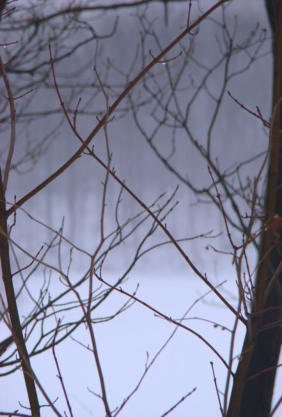
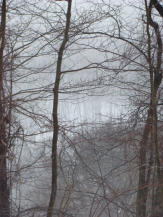
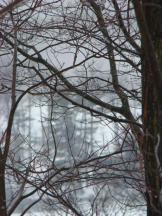
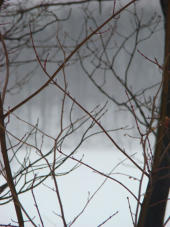
Nothing
was
taken
in
between.
The
time
lapse
was
me
moving
from
one
location
to
the
next.
Three
individual
scenes,
all
beautiful
and
secretive.
My
goal
was
to
see
the
trees
across
the
lake
while
simul
-
taneously
creating
a
mystery
as
if
some
-
one
is
looking
through
binoculars
or
perhaps
a
rifle
scope.
Someone
who
is
hiding,
someone
who
doesn’t
want
to
be
seen.
The
winner
was
obvious.
After
manipulating
the
color
to
bring
out
the
blue emotion, the end result was:
After
changing
the
hue,
finding
the
right
lightness
and
adding
the
text,
the
front
cover
was
perfect
for
the
story.
This
is
the
final product.
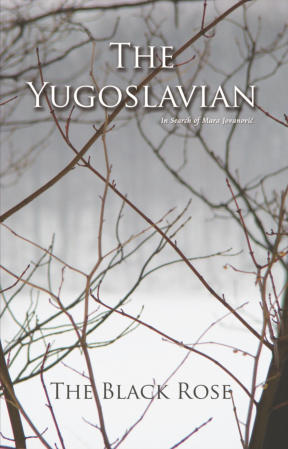
Quite
often
I
get
scolded
for
obscuring
my
name.
But
the
story
is
about
the
charac
-
ters,
even
if
my
heart
and
soul
are
behind
each
and
every
word.
Writing
is
an
art.
Once
you
have
committed
your
story
to
paper,
finding
the
perfect
image
to
reflect
what
your
heart
has
transcribed
is
some
-
times
the
hardest
part
of
the
entire
writ
-
ing
process.
It
is
said,
“You
can’t
judge
a
book
by
its
cover.”
They’re
right.
Just
as
you
can’t
judge
a
book
by
its
title
(another
thing
I
hear
about
from
people).
Yet
it
is
true.
“A
picture
is
worth
a
thousand
words.”
And
even
if
everyone
doesn’t
see
the
wintery
mystery
of
someone
spying
through
the
trees
in
this
cover,
my
heart
is
content
in
knowing
no
other
image
could
take its place.
In
the
end,
the
perfect
cover
photograph
was right in my backyard…
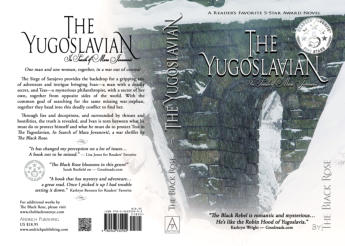
First,
the
shot
needed
to
be
brightened
but
to
maintain
as
much
detail
as
possible.
Then
it
was
fitted
to
the
book
cover
size
of
5.5x8.5.
That
left
a
good
deal
of
space
on
the
left
end
so
I
cropped
and
rebuilt
the
photograph.
The
shot
was
enhanced
with
several
layers
of
a
light,
white,
gradiant
overlay
to
enhance
the
snowy
look
until
I
got this.
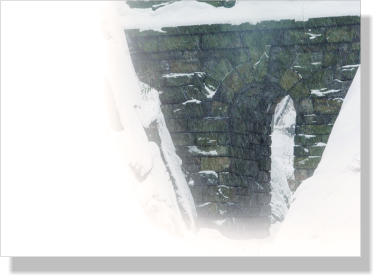
I
love
photographs
that
wrap
around
a
book.
I
feel
it’s
more
intriguing
and
inviting
to
readers
and
makes
the
book
more
of
a
piece
of
art
than
just
literature.
After
fid
-
dling
with
different
font
styles
and
sizes,
this is what I ended up with:
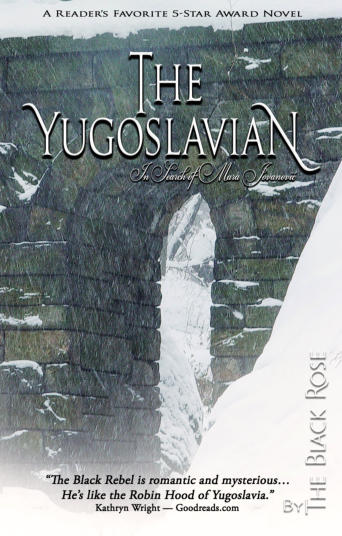


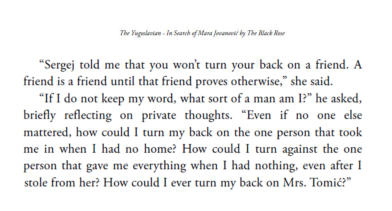


Purchase Options
